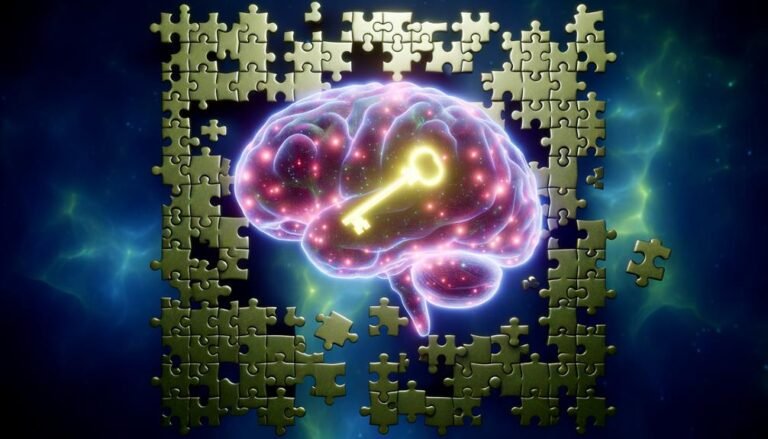Training Needs Analysis and Curriculum Design
In today's fast-paced and ever-changing business landscape, organizations are constantly seeking ways to stay ahead of the competition. One key strategy that has proven effective is investing in employee training and development.
However, before designing any training program, it is crucial to conduct a thorough Training Needs Analysis (TNA) to identify the specific areas where training is required. This analysis not only ensures that the training is relevant and targeted, but also helps in designing a customized curriculum that aligns with the organization's goals and objectives.
But how exactly does one go about conducting a TNA and designing an effective curriculum? In this discussion, we will explore the importance of TNA, the key steps involved, and the critical factors to consider when designing a curriculum that truly meets the needs of both the organization and its employees.
So, let's dive into the world of TNA and curriculum design and discover how these processes can unlock the full potential of an organization's workforce.
Key Takeaways
- Training needs analysis is crucial for developing an effective curriculum design.
- TNA helps identify gaps between current and desired employee performance levels.
- It optimizes the allocation of training resources and improves employee performance and productivity.
- Designing a customized curriculum that aligns with organizational goals and involves key stakeholders is essential for successful implementation.
Importance of Training Needs Analysis
The importance of conducting a comprehensive training needs analysis cannot be overstated, as it serves as the foundation for developing an effective curriculum design. A training needs analysis is a systematic process that identifies the gaps between current and desired employee performance levels. It helps organizations understand the specific knowledge, skills, and competencies required for employees to perform their roles effectively.
One of the key reasons why training needs analysis is crucial is the importance of continuous learning in today's fast-paced and ever-changing business environment. Organizations need to adapt quickly to new technologies, market trends, and customer demands. By conducting a thorough analysis, organizations can identify the specific areas where employees require training and development to keep up with these changes.
Moreover, training needs analysis brings several benefits to organizations. Firstly, it helps optimize the allocation of training resources. By identifying the specific gaps in employee knowledge and skills, organizations can prioritize and allocate resources to address these areas effectively.
Secondly, it helps improve employee performance and productivity. By providing targeted training, organizations can enhance employee competencies, leading to improved performance and increased productivity.
Lastly, training needs analysis contributes to employee satisfaction and engagement. By investing in their development, organizations demonstrate their commitment to employee growth, leading to increased job satisfaction and motivation.
Key Steps in Conducting a Training Needs Analysis
When conducting a training needs analysis, there are key steps that need to be followed.
The first step is assessing the skills of the employees to identify any gaps in knowledge or performance. This is crucial in determining the areas that need improvement.
Once the gaps are identified, training objectives can be developed to address these specific needs.
Assessing Employee Skills
To conduct a comprehensive Training Needs Analysis and accurately assess employee skills, it is crucial to follow a systematic and structured approach. Assessing employee performance is essential to identify the skills gap and determine the training requirements.
There are several skills assessment methods available to evaluate the proficiency of employees. These methods include self-assessment, supervisor evaluation, peer evaluation, and job performance analysis.
Self-assessment allows employees to evaluate their own skills and knowledge. Supervisor evaluation involves managers assessing their subordinates' skills based on their observations and feedback. Peer evaluation involves colleagues assessing each other's skills. Job performance analysis involves analyzing the actual job tasks and requirements to determine the necessary skills.
Identifying Knowledge Gaps
In order to effectively conduct a Training Needs Analysis, it is essential to carefully identify and address knowledge gaps within the organization. A knowledge gap refers to the difference between what employees currently know and what they need to know to perform their jobs effectively. By identifying these gaps, organizations can design targeted training programs to bridge the knowledge divide and improve overall performance.
To identify knowledge gaps, a knowledge assessment is conducted. This assessment involves evaluating employees' existing knowledge and skills against the desired level of proficiency. It can be done through various methods such as surveys, interviews, and performance evaluations. By analyzing the results, organizations can pinpoint specific areas where employees lack the necessary knowledge or skills.
Here is a sample table that can be used to identify and evaluate knowledge gaps:
| Knowledge Area | Existing Knowledge Level | Desired Knowledge Level |
|---|---|---|
| Sales Techniques | Intermediate | Advanced |
| Customer Service | Basic | Proficient |
| Communication Skills | Advanced | Proficient |
Once the knowledge gaps are identified, organizations can develop training programs tailored to address these gaps. This targeted approach ensures that employees receive the necessary training and resources to enhance their performance and contribute to the overall success of the organization.
Developing Training Objectives
Developing training objectives is a crucial step in conducting a Training Needs Analysis, as it helps organizations define the desired outcomes and performance expectations for their training programs. By developing measurable objectives, organizations can ensure that their training programs are effective and aligned with their goals.
Incorporating technology in training can also enhance the learning experience and improve knowledge retention. Here are three key considerations when developing training objectives:
- Clearly define the expected outcomes: Training objectives should be specific, measurable, achievable, relevant, and time-bound (SMART). This ensures that the desired outcomes are clearly defined and can be evaluated.
- Align objectives with organizational goals: Training objectives should be aligned with the overall goals and strategies of the organization. This ensures that the training program contributes to the organization's success.
- Leverage technology for enhanced learning: Incorporating technology, such as e-learning platforms or virtual reality simulations, can make training more engaging and interactive. It allows for self-paced learning, real-time feedback, and access to a wealth of resources.
Gathering and Analyzing Data for TNA
To effectively gather and analyze data for a training needs analysis (TNA), it is important to consider the appropriate data collection methods and data analysis techniques.
The choice of data collection methods, such as surveys, interviews, or observations, should align with the objectives of the TNA.
Similarly, the data analysis techniques employed should be suitable for interpreting and extracting meaningful insights from the collected data.
Data Collection Methods
Effective data collection methods are essential for conducting a thorough Training Needs Analysis (TNA) and designing a comprehensive curriculum. To gather the necessary data, two common methods that can be employed are interviews and surveys. These methods allow for systematic collection of information from individuals or groups, providing valuable insights into the training needs of the target audience.
- Interviews: Conducting one-on-one or group interviews allows trainers to gather detailed information directly from participants. This method facilitates open-ended discussions and provides an opportunity to explore individual perspectives and experiences.
- Surveys: Surveys are a cost-effective way to collect data from a large number of participants. They can be administered online or in person and can include both closed-ended and open-ended questions. Surveys provide quantitative data and allow for the analysis of trends and patterns.
Data Analysis Techniques
To effectively evaluate the gathered data from interviews and surveys, data analysis techniques play a crucial role in gaining meaningful insights for Training Needs Analysis (TNA) and curriculum design. Data cleaning techniques are employed to ensure that the data collected is accurate and reliable. This involves identifying and correcting errors, inconsistencies, and missing values in the data set. By using data cleaning techniques, researchers can ensure that the analysis is based on high-quality data, leading to more accurate and reliable results.
Another important data analysis technique is predictive modeling. This involves using statistical algorithms and machine learning techniques to analyze the data and make predictions about future trends or outcomes. Predictive modeling can be used to identify patterns and relationships in the data, and to forecast the future training needs of an organization.
Designing a Customized Curriculum
Designing a customized curriculum requires a thorough analysis of the specific training needs and goals of the target audience. By tailoring the curriculum to meet the unique requirements of the learners, it increases the chances of effective implementation and successful outcomes.
Here are three key considerations to keep in mind when designing a customized curriculum:
- Identify learning objectives: Clearly define the desired outcomes and skills that the learners should acquire by the end of the training program. This will help in determining the content, activities, and assessments that should be included in the curriculum.
- Assess prior knowledge: Understand the existing knowledge and skills of the learners to avoid redundancy and ensure that the curriculum builds upon their existing foundation. This can be done through pre-assessments or learner interviews.
- Select appropriate instructional strategies: Choose instructional methods and techniques that align with the learning preferences and needs of the target audience. This could include a mix of lectures, discussions, hands-on activities, and multimedia resources.
Aligning Curriculum With Organizational Goals
Aligning the curriculum with the organizational goals is crucial for ensuring that the training program is relevant and contributes to the overall success of the organization. Organizational alignment refers to the process of designing a curriculum that directly supports and aligns with the strategic objectives and priorities of the organization. By aligning the curriculum with the organizational goals, organizations can ensure that the training program addresses the specific skills and knowledge needed to achieve those goals.
To achieve organizational alignment, curriculum development strategies should be employed. These strategies involve closely examining the organization's goals, identifying the key competencies required to achieve those goals, and designing the curriculum accordingly. This may involve conducting a thorough training needs analysis to identify the skills gaps within the organization and determining the most effective training methods and resources to address those gaps.
Additionally, it is important to involve key stakeholders, such as managers and employees, in the curriculum development process. This ensures that their input and perspectives are considered, and that the curriculum reflects the needs and realities of the organization.
Furthermore, regular evaluation and feedback mechanisms should be implemented to assess the effectiveness of the curriculum in meeting the organizational goals. This allows for continuous improvement and adaptation of the curriculum as needed.
Implementing Training Programs Effectively
The successful implementation of training programs is essential for organizations to achieve their goals and objectives. To ensure the effectiveness of training programs, organizations should consider the following strategies:
- Clear Learning Objectives: Clearly define the learning objectives of the training program. This helps participants understand what they will gain from the training and allows trainers to assess the achievement of these objectives.
- Engaging Training Methods: Utilize a variety of training methods to engage participants and cater to different learning styles. This can include interactive activities, group discussions, case studies, and simulations. By providing an interactive and engaging learning experience, participants are more likely to retain and apply the knowledge and skills learned.
- Ongoing Evaluation: Continuously measure the effectiveness of training programs to identify areas for improvement. This can be done through assessments, feedback forms, and post-training evaluations. By regularly evaluating the training program, organizations can identify any gaps or shortcomings and make necessary adjustments to ensure maximum impact.
Measuring training effectiveness is crucial to determine the return on investment and to improve future training initiatives. Organizations can measure training effectiveness through various methods such as pre- and post-training assessments, performance evaluations, and feedback from participants and supervisors. By collecting and analyzing data on training effectiveness, organizations can make informed decisions about their training programs and continuously improve their effectiveness.
Evaluating the Impact of Training on Performance
To accurately measure the impact of training on performance, organizations need to establish clear performance metrics and collect relevant data. Evaluating training effectiveness and measuring training outcomes are crucial steps in determining whether the training program has achieved its intended goals. This evaluation process allows organizations to assess the effectiveness of the training and make informed decisions regarding future training initiatives.
One way to evaluate training effectiveness is through the use of performance metrics. These metrics should align with the desired outcomes of the training program and provide a quantifiable measure of performance improvement. By comparing pre-training and post-training performance levels, organizations can determine the extent to which the training has impacted employee performance.
Collecting relevant data is key to accurately measuring the impact of training on performance. This data can include performance evaluations, surveys, and assessments. By analyzing this data, organizations can identify trends, strengths, and areas for improvement in their training programs.
In addition to performance metrics and data collection, organizations should also consider gathering feedback from trainees. This feedback can provide valuable insights into the effectiveness of the training program and help identify areas where adjustments may be needed.
Ultimately, evaluating the impact of training on performance allows organizations to make data-driven decisions about their training programs. By continually assessing and improving training initiatives, organizations can ensure that they are maximizing the benefits of training for both employees and the organization as a whole.
Conclusion
In conclusion, conducting a thorough training needs analysis is crucial for effective curriculum design and organizational success. By gathering and analyzing relevant data, training programs can be tailored to meet the specific needs of individuals and align with organizational goals.
Implementing these programs effectively and evaluating their impact on performance ensures continuous improvement and development. As the saying goes, 'A well-designed curriculum is a roadmap to success, guiding individuals towards their full potential.'







